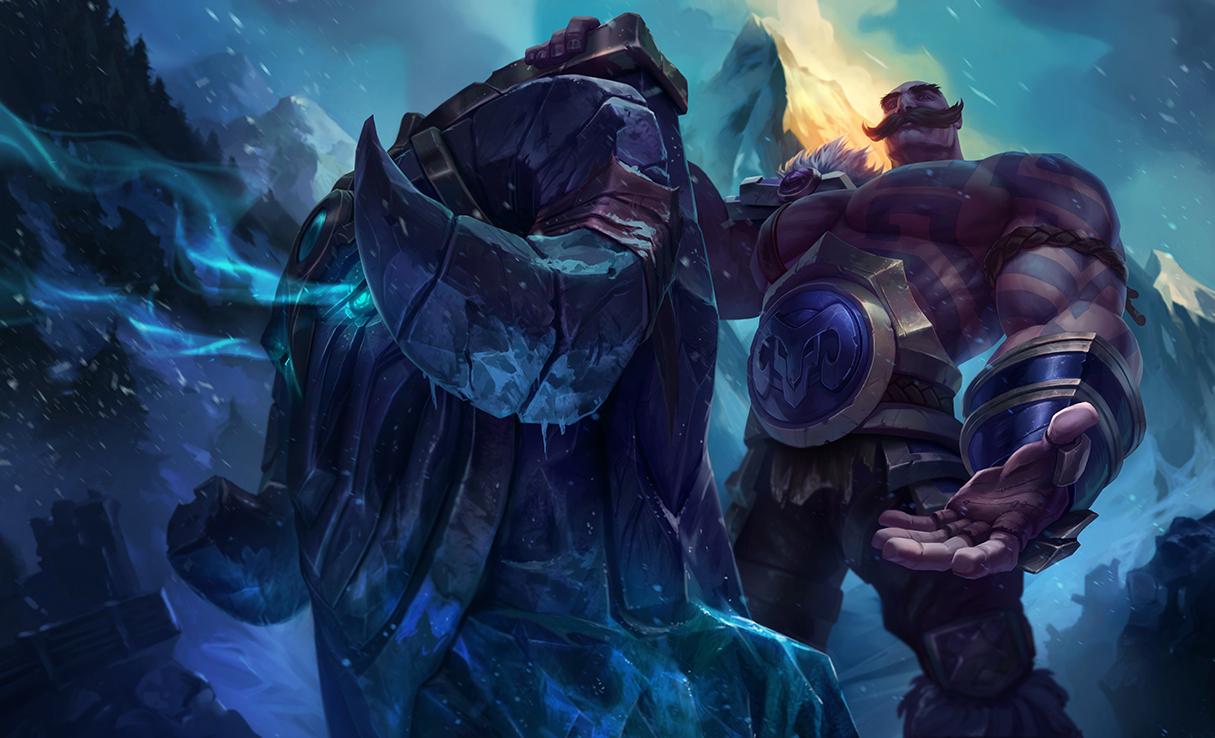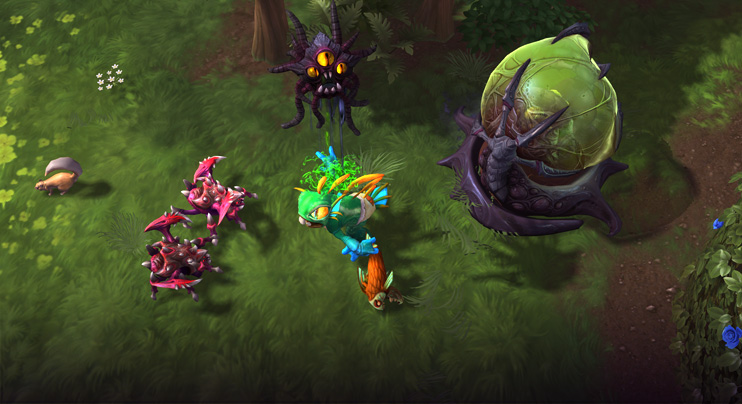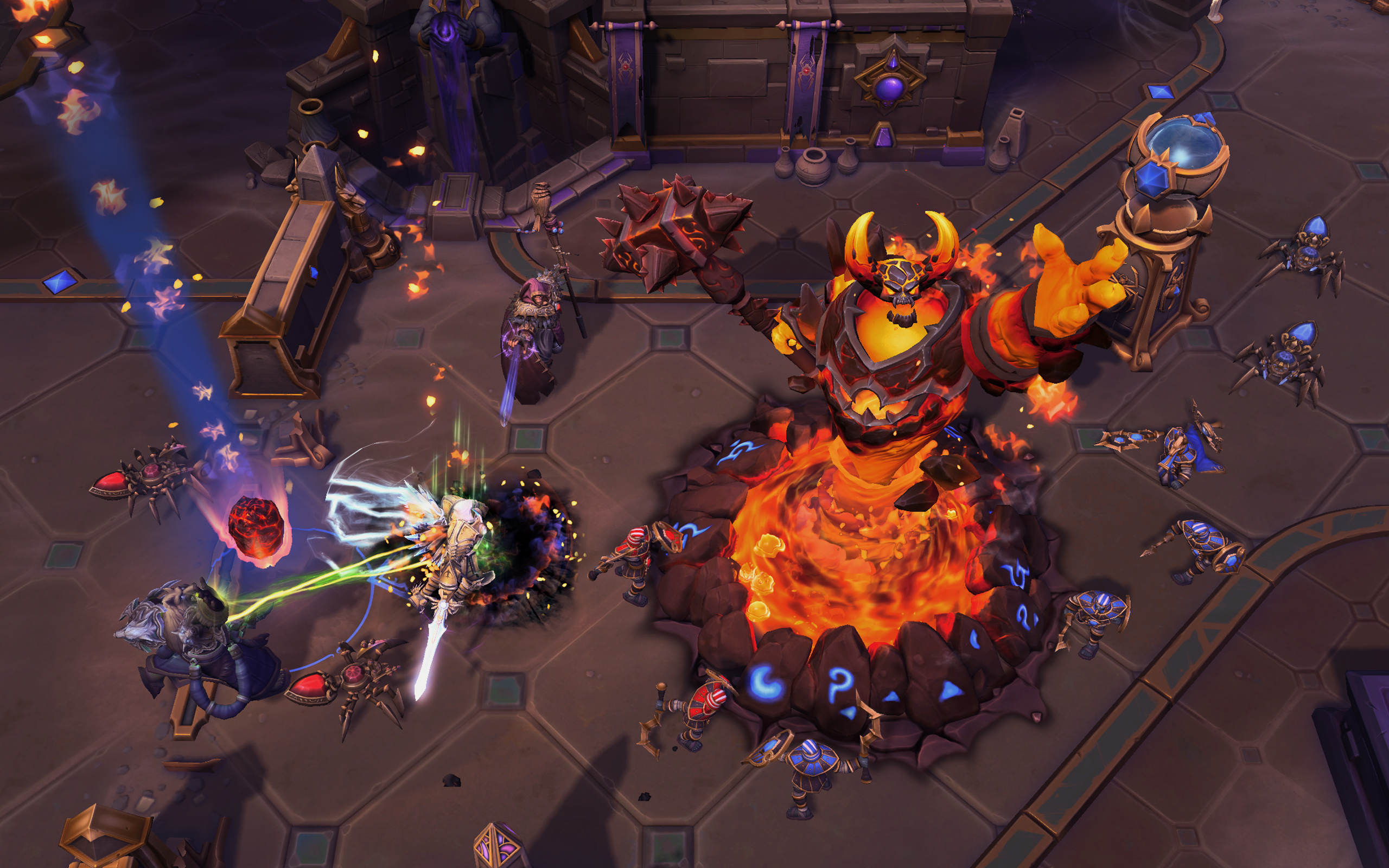League of Legends’ latest update demonstrates Heroes of the Storm’s influence
Blizzard's 'weird' MOBA is making its mark on the Rift.

League of Legends’ latest update demonstrates Heroes of the Storm’s influence
When World of Warcraft was at the height of its popularity, a familiar cycle fell into place. A game would rise up, selling itself as a potential replacement to the king of MMOs. There would be one or two features everyone adored, but when a new WoW expansion hit, everyone would immediately jump back on their old paladin or rogue and get back to the grind. The new, shiny MMO would stumble along for a while, eventually falter, and eventually its best ideas would be cannibalized into the next WoW expansion. It was the circle of life.
League of Legends has found itself in a similar cycle, with more MOBAs trying to replicate its success than I can count springing up over the last few years. Precious few of them have survived. Dota 2 has always been its own thing, separate from the League ecosystem. Smite has carved out its own fanbase. And then there’s Heroes of the Storm, the weird game. The Mid-Season Update for League brought some surprising changes that makes League look a little more like Blizzard’s MOBA.

Heralding the new changes
Heroes of the Storm, the Blizzard All Stars game that puts characters from Overwatch, Starcraft, Warcraft, and Diablo into an arena to clobber it out, has always been an odd duck. It’s taken a decidedly different path than League. Even so, League has recently—similar to the WoW cycle—borrowed a few of Heroes’ successful elements.
For instance, one of the big pulls of Heroes is the way their jungle works. Instead of having one jungler running around and farming mobs for experience and gold like the League model, Heroes encourages the entire team to pitch in and contest jungle objectives. If you take down a camp of neutral baddies, they’ll join your team and happily push down a lane.
The Rift Herald, the mini-baron objective for top laners, is undergoing a change that feels very HotS-inspired. Now, the Herald will drop an Eye, which goes into your inventory. Activating it summons a big, angry Rift Herald to shove down the lane. It’s something that immediately brings Heroes of the Storm to mind, and is one of their most iconic mechanics.
Support items also borrow a little something from Heroes of the Storm: the quest mechanic. In HotS, upon successfully completing a small challenge, like hitting a skillshot or auto attacking while an ability is active, heroes gain quest credit. Once they’ve fulfilled the quest by hitting 10 skillshots or auto attacking 80 times, their ability gets a bonus.
Support items in League will be gaining a similar effect, rewarding successful supports with a little extra late game power and making those early game investments more useful. Quests aren’t as recognizable as a Heroes of the Storm mechanic as the Rift Herald, but it's likely that designers saw the merit in the idea.

A tale of two MOBAs
While League has taken inspiration from a couple of Heroes mechanics, the two games hold distinct identities. League has leaned into being a competitive game of skill, and stands as the MOBA. In a recent post on his Tumblr, Greg “Ghostcrawler” Street spoke about some of the things League chooses to focus on: “We hold the laning phase as a sacred part of the game where you get to demonstrate your individual skill with only limited influence from the players in other lanes. We value counterplay as an important design value, and we think it’s harder to provide meaningful counterplay if the enemy champion is doing really, really unusual things (like not leaving base)."
Heroes, on the other hand, has carved out an identity as the MOBA that breaks the rules. There are multiple maps, each with its own objective and layout. Champions have a much greater variation than League, and the extreme cases push the envelope. Ragnaros can become a raid boss in the ruins of a Fort, raining terror down upon the enemy team. Abathur stays in a safe place and controls the battlefield by putting biological hats on his teammates. Murky is a one man army who can quickly regenerate from key points on the map and offers minimal rewards to his killer.
Keep up to date with the most important stories and the best deals, as picked by the PC Gamer team.
These two paths offer two gameplay experiences, and they’re both valid. Ghostcrawler stresses that the design philosophies between Heroes and League are both important and deserving of respect. But what’s interesting is that Heroes has given up trying to contest League’s dominance; they’re leaning into their niche as the odd MMO with wild heroes and wild map objectives like tactical nukes or shrines that summon giant, fort-punching punishers.

What’s worth keeping?
Ghostcrawler has confirmed that champions like Ivern or Bard are as wild as League is as willing to get: there’ll be no Ragnaroses or Murkies in the future of League. While Heroes often makes headlines for these weird, rule breaking champions, there’s way more to the game than that. In fact, some of the features that HotS has are absolutely worth stealing. While League is adapting for the midseason (and eventually, the preseason), maybe they should consider taking inspiration from the following:
One: A painstaking, multi-step new player on boarding process. Heroes’ new player tutorials makes it nearly impossible to miss out on the game’s core concepts. Right now, entering League of Legends is significantly more difficult.
Two: At the start of each game, champions exchange some banter on the platform. Right now in League, you have to taunt or joke while standing near an appropriate champion to hear those sweet lines of dialogue, and you usually get a skillshot to the face for your trouble.
Three: A little more variety. Sure, League is never going to leave the Summoner’s Rift... but why not take some notes from Heroes and throw in some different announcers? It’s always a refreshing change of pace to go from a pirate shouting at you, to an angel commanding you in the fight against Hell, to a terrified scientist hoping for his survival. While the Rift will always remain the same, why not get some new announcers in the booth?
Ultimately, I’m glad League has chosen to stay the course. We’ll see whether the new Rift Herald and quest mechanics stay in the game, or eventually filter out over the course of months and patches. Competition from other MOBAs makes League of Legends healthier. The developers have a clear vision of the game they want, and can adopt mechanics or ideas that aid them in that quest. We may never get an Abathur-style hero, but we will get tweaks to the old systems we love that hopefully make the game better.

